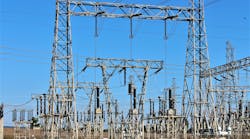Utility executives are nervous about the future. Most believe distributed energy resources (DERs: renewable generation, battery storage, electric vehicles and smart appliances) will continue eroding traditional kilowatt-hour sales thanks to generous subsidies and strong customer demand. Worse, as more DERs are installed, they put unprecedented stress on today’s centrally managed electric grid.
Aside from working with regulators to ensure fair DER policies, how should utilities respond? Simply put, utilities should enable more DERs. After all, if we don’t take care of our customers, someone else will. And the time to act is now.
The Electric Grid’s Version of the Smart Phone
But how can we accomplished this if current grid technologies are expensive, single-purpose and proprietary? We should examine another grid — telecommunications — to determine the way forward. Faced with deregulation, competition from a substitute technology (cell phones) and declining sales, telecommunications technologies evolved to meet their customers’ changing needs.
Consumers love telecom-enabled technologies, but lugging around multiple devices — GPS, MP3 player, camera, phone, laptop — proved inconvenient and expensive. So when smart phones arrived, consumers bought them in droves. Similarly, utilities should adopt a common “smart phone” platform to achieve the same connectivity efficiencies.
Duke Energy calls the electric grid’s version of the smart phone a “communications node,” which connects generation, transmission, distribution and demand-side resources using a single, common platform. It also can reduce operating costs, aggregate data and run third-party software, giving it amazing flexibility to avoid quick obsolescence. Thanks to its connectivity capabilities, the communications node can cut costs to deploy and operate distribution automation infrastructure by 16% to 33%, and reduce remote transmission switch telecommunications costs by up to 90%. And it can be used for a wide variety of use cases such as AMI, streetlight control and distribution automation without replacing existing infrastructure.
Complementary Decentralized Intelligence
Unfortunately, bandwidth-hungry smart phones, like their DER cousins, do not have a static, predictable impact on the grid. To compensate, telecom companies decentralized grid functions, mixing local optimization with complementary centralized management. Because of their complexity, DERs are pushing electric utilities to adopt a similar distributed infrastructure.
Luckily, the same communications nodes that connect utility and demand-side resources can also host the distributed intelligence necessary to meet this challenge. Using this architecture, Duke Energy has seen impressive results to date. For example, we demonstrated the ability to locally manage solar intermittency, making distributed optimization decisions among battery storage, inverter, meter and photovoltaic panels every 250 ms — an unfathomable feat for centralized systems.
The Critical Need for Interoperability
Similarly, let’s examine Samsung’s development of the smart phone. Samsung believed consumers would prefer a phone based on interoperability and a third-party ecosystem of applications over a proprietary siloed phone. Samsung and like-minded smart phone manufacturers now command the lion’s share of the cell phone market and proprietary phones have largely disappeared.
Utilities can internalize this lesson, building interoperability into the smart grid by requiring vendors to make assets interoperable via other companies’ communications nodes. Today, Duke Energy uses this solution to make assets work together using open-source field messaging (for example, publish/subscribe to any vendors’ assets). This enables interoperability between 15 different devices while hosting third-party analytics at an incremental cost of $50.
Military-Grade Cybersecurity
When connectivity, distributed intelligence and interoperability come together on a single platform, we gain another benefit: improved cybersecurity. Now each portion of the network will be less vulnerable because it is a self-contained, fire-walled security island with encryption and advanced security capabilities. Duke Energy is actively partnering with leading companies to implement these tools on the communications node platform.
American scientist Alan Kay said the best way to predict the future is to invent it. I’m asking other utilities to join us in our effort to enable new grid capabilities, reduce costs, manage DERs and provide growth opportunities for years to come.

